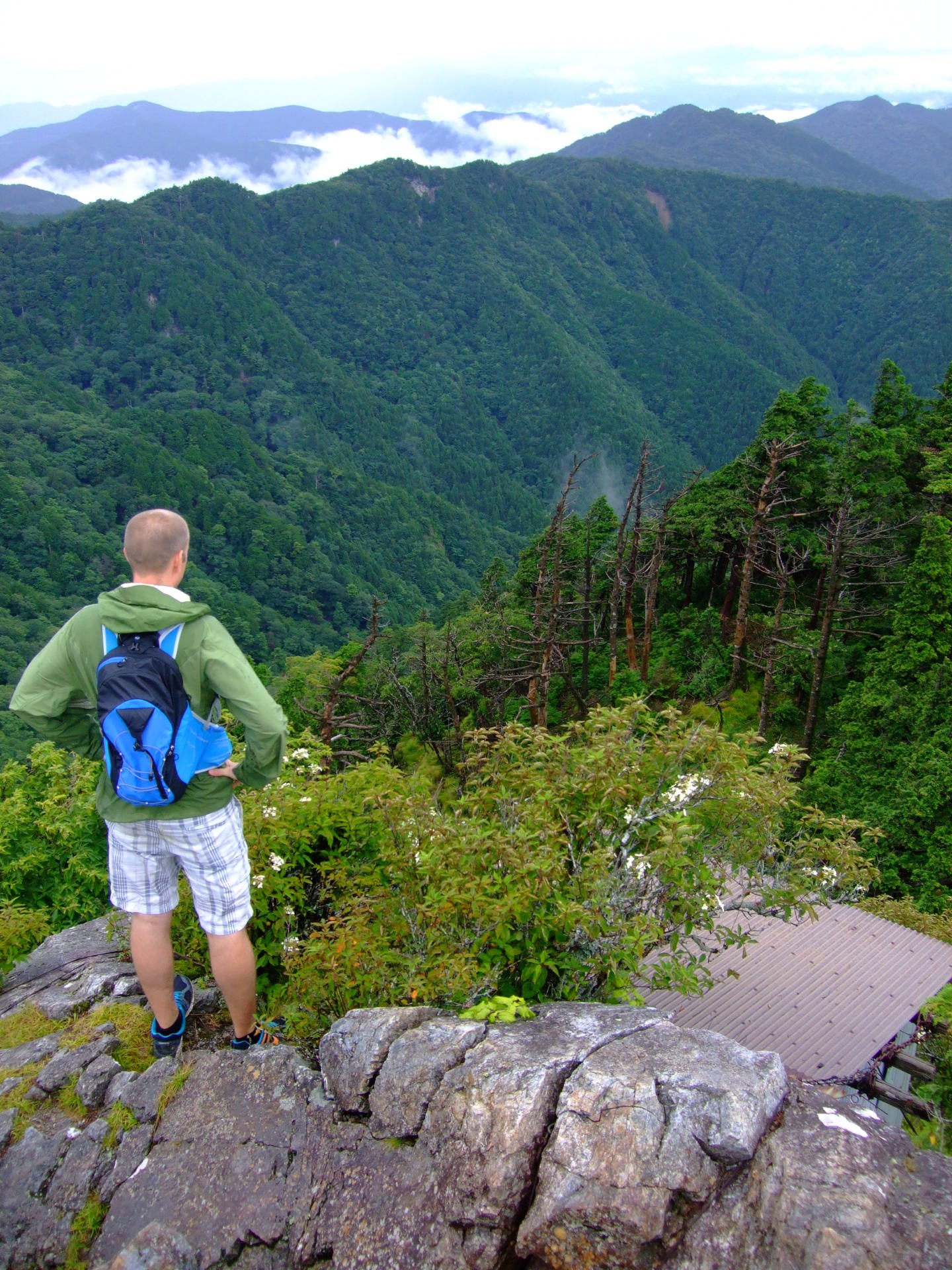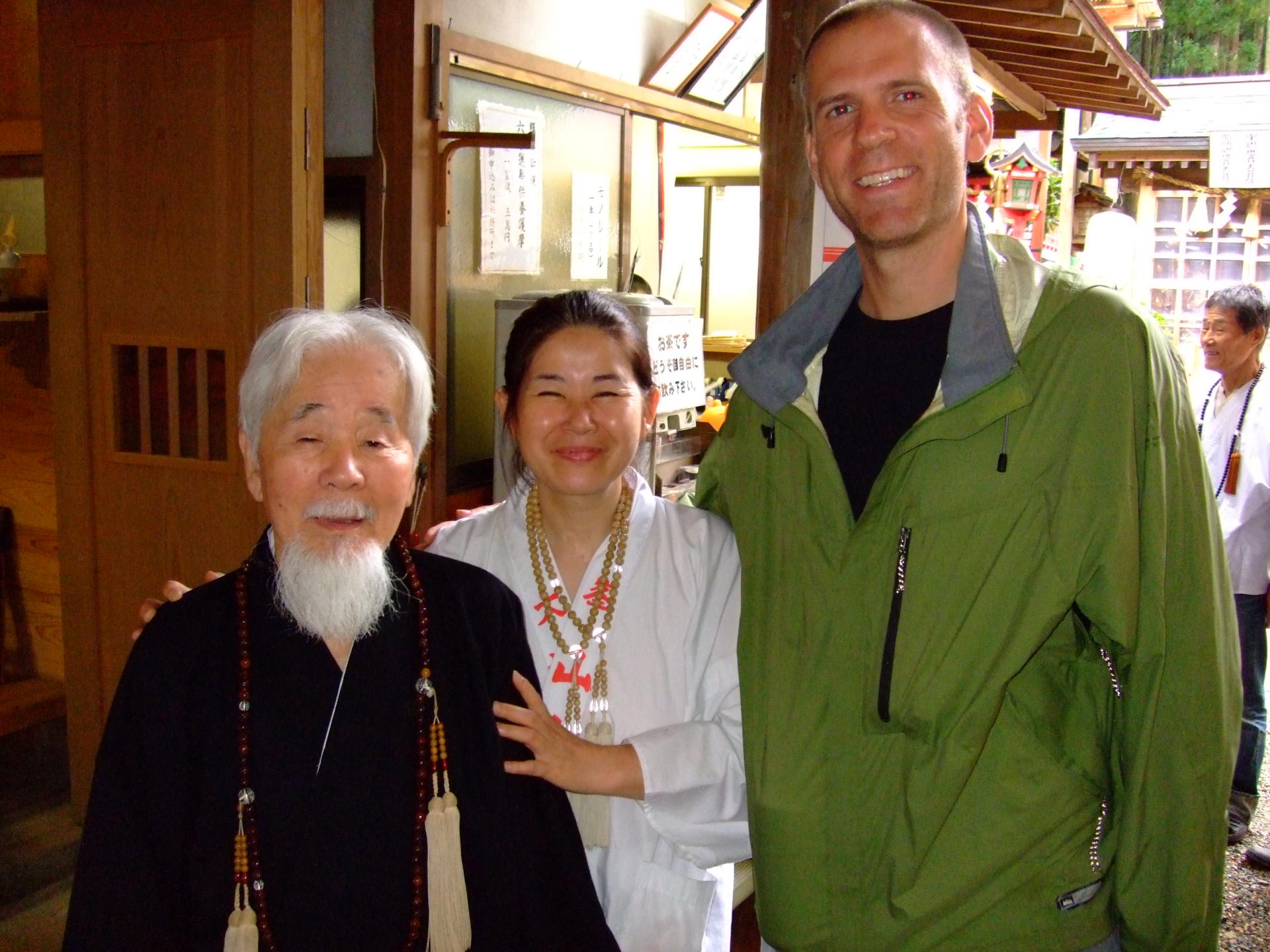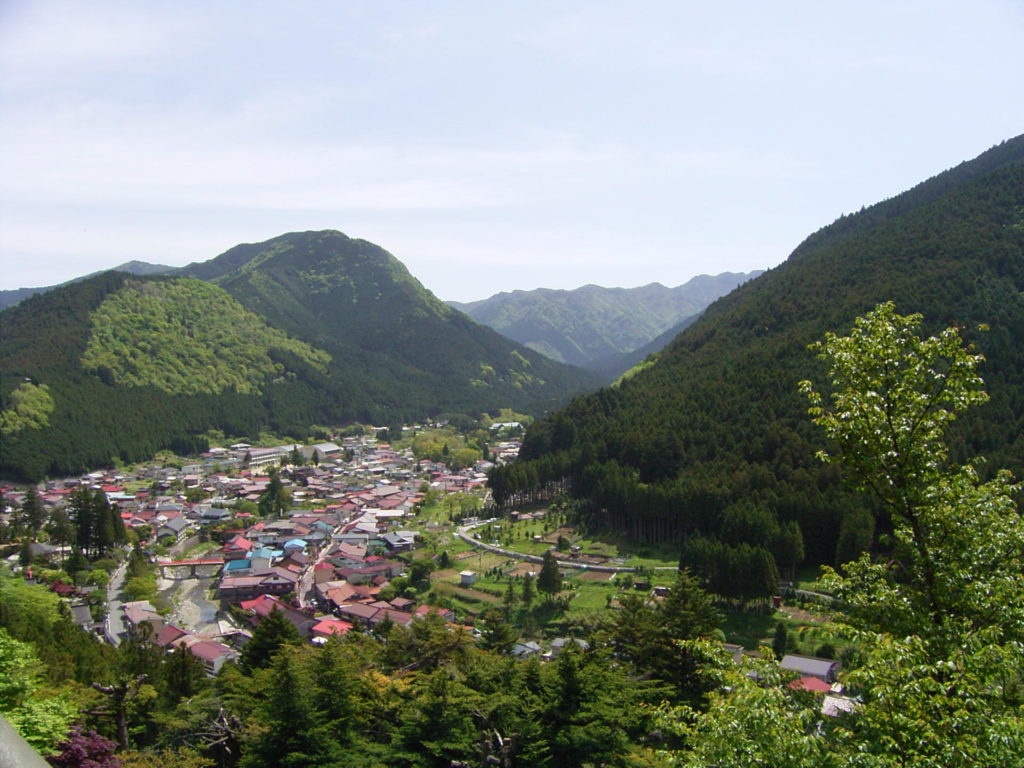Completely soaked from head to toe, I manage to work my way down the snow-covered mountain stream with some optimism. I think to myself, “OK, if I can make it to lower ground, I might be able to get out of here before it gets dark.” Suddenly, I nearly go face first over a 20-meter waterfall, a bed of rocks and cold rushing water far below. I catch myself just in time, then panic takes over. “This cannot be happening to me!” I say out loud.

A few years back, I had some time off from my day job as an English teacher at a junior high school in Osaka and was looking for a place to kick back for a few days, relax, read and do a bit of winter wandering in the mountains. After an Internet search, I stumbled upon a quaint village in southern Nara known as Dorogawa Onsen. It was close enough that I could get there in a few hours by public transportation, yet far enough away to feel like I was “getting away.”
I arrived in the afternoon on a crisp wintry day. It was still relatively early, but the sun was already starting to set. The town was covered in snow and there wasn`t a soul to be seen, but yet there was an instant charm about it. The main street was filled with Japanese inns and little shops selling traditional herbal medicine, mostly closed or empty. I plodded along until I came to my guesthouse and checked in.
Early the next morning, I attended a daily ritual at a local Shugendo temple; Shugendo is a somewhat mysterious religion that combines aspects of Buddhism and Shintoism, nature worship and rigorous ascetic training in the mountains. Its headquarters, Ominesanji Temple, is a sacred site that stands atop Mt. Sajogatake in Dorogawa Onsen, part of the UNESCO World Heritage Kumano Pilgrimage route, and has been in use for more than 1,000 years.
For close to an hour, the group of monks sat quietly chanting while a few individuals rhythmically beat Taiko drums and others trumpeted away on horagai (large conch shells). I was almost in a trance when it ended. This is where I was first introduced to the head priest, Shinchoku Sensei.
He told me unbelievable tales of his mountain piety. As a young man in his 20s, he had gone into the mountains looking to communicate directly with the gods and stayed there for three years, until he felt he had finally reached his purpose. During that time, he did not eat, drink or sleep. He merely existed.
Naturally, hearing such a far-fetched story, I had my doubts, but something about the way he spoke was quite convincing. In those moments I felt a connection different than any I`ve had with another human being. Afterwards, we had breakfast with his group and said farewell. I expressed a desire to return again someday.
The following year my wife and I were expecting our first child. However, before our daughter arrived, I wanted to make a pilgrimage to Ominsanji Temple and meet Shinchoku Sensei to share our good fortune. I would hike my way up the same snowy mountain I had ascended on my first trip to Dorogawa Onsen the previous winter. Once I reached the temple, I would stop and pray for the healthy birth of our daughter.
By sheer coincidence, the day I arrived in town was also the day of the annual local festival celebrating the Shugendo founder En No Goyja. Naturally, Shinchoku Sensei had his hands full but still took time out of his busy schedule to meet with me before I climbed the mountain.
He was elated with my news and looked forward to the chance to meet our daughter. He handed me a small gift envelope which I reluctantly accepted. I made it to the top of the mountain and entered the temple, purchased a small omamori (charm) for the healthy birth of our child, then walked outside and stood alone near the top of the mountain looking out at a broad landscape of peaks and endless trees, feeling a great sense of anticipation.
In March of 2014, my wife was pregnant with our second child. Again, I found myself on an empty bus heading toward Dorogawa Onsen. I would stay for a couple of days and return to the top of the mountain to pray for the health of our daughter due in May.
I arrived around 7 p.m., and the town was lifeless and cold. I hadn’t made a reservation, so stopped by a campground where I had previously stayed. As I walked down a dark road toward the campground, a car slowed down and pulled up next to me.
“Hey, what are you doing here?” said an excited voice from inside the car.
“I am looking for a place to stay the night. Any chance I can stay at the campground?” I replied.
Turned out the lady in the car was the owner of the campground where I was heading.
“Sure, hop in.” she said.
There had been a big snow fall two days prior, and the town was still covered in a white blanket. She offered to let me stay in the lone cabin on the property instead of pitching my tent on the frozen ground. I gladly accepted.
The next morning, I got up early to get ready to hike. There was a lot of snow in the town, and she suggested there might be two meters or more up in the mountains. I had a large backpack with my tent, sleeping bag and supplies but decided to leave my heavy stuff behind, opting to quickly work my way to the peak and get back for an afternoon dip in one of the hot springs in town.
It was not a difficult trek up the mountain, the snow adding a peaceful beauty to the scenery rather than causing any hindrance. The trail was empty and after three and a half hours I found myself at the top, staring at the shuttered temple with snow piled up to the top of the doorway.
I thought to myself, “There goes any chance getting an omamori.” I tossed a Y5 coin on the snow-covered prayer box and bowed my head in silent prayer.
It was a brilliantly sunny day, and my heart was full. In a couple of months our family would grow to four. I was light on my feet and practically skipping down the mountain trail. I imagined the hot spring bath waiting for me when I returned to town.
I came to a path that seemed closed due to some broken steps. As I attempted to reach a parallel path, just meters away, I slipped. Suddenly I was sliding down the mountain like a human sled until I came to an abrupt halt in the snow some 70 meters from the trail.
I looked back up at the trail with hope and anguish. I paused to catch my breath. I tried to crawl my way up the slippery slope, only to fall further down, faster this time. My body dangerously caromed down the side of the mountain until I toppled into a frigid mountain stream a couple hundred meters below. A couple hours later I arrived at the steep waterfall.
I retreated and trudged my way up to a nearby ridge. I stood there with my heart pounding through my chest; water dripping from my clothes. The last silhouette of the sun was passing behind the peak revealing the evening sky. I tried to calm myself and take note of my situation. I was completely wet.
It would soon drop to below freezing temperatures as night came. My cell phone was lost during the fall. All I had was a Ziploc bag of nuts, a small pack of dried dates and my empty water bottle. I was choking with fear.
I turned my head around to survey my surroundings. All I could see were trees and snow until deep down in the cedar trees something caught my eye. Was it a house? My heart leapt with hope. Maybe there was someone there. At the very least, I would have some sort of shelter for the night.
I scrambled down the steep snowy slope in the dark and arrived at a hut. It was clearly abandoned and derelict. I forced my way through a broken window, sat down on a ratty old tatami mat and willed myself to stay awake until morning.
I survived for six nights in that broken down hut. A search and rescue team was organized. There were men, dogs and helicopters. One passed over my head as I looked up and screamed “Help!” at the top of my lungs. They didn’t see the hut or me inside the thick forest.
On the sixth night, I sat inside an old goemboro (traditional cauldron-style bathtub) resigned to the fact I would not be seeing my wife, daughter or unborn child. I was breaking. The hut had provided enough shelter to keep me alive; however, I wouldn`t survive many more nights if I didn`t get myself off the mountain.
As despair was absorbing my last hopes, I had a vision of my sweet, little daughter. It was as if she was right there with me saying, “Daddy, don’t give up. You can get back up the mountain.” It was strange, but a sense of calm washed over me.
I would give all I had left in me to climb to the top and find my trail out, even if it meant freezing to death in the process. I sat there violently shivering in the darkness, preparing myself for a dawn that seemed would never arrive.
The next morning, as rain was pouring down in buckets, I said goodbye to the hut for the last time. I promised myself I would keep working my way up the mountain until I could go no further. I slowly made progress, mostly crawling my way through the wet snow.
It must have been afternoon; I could not say for sure, but I saw something that looked like a wooden structure on top of a cliff. I dragged myself closer, trying to locate some kind of viewpoint. I tumbled over the rail onto a wooden platform. I sat there for some moments, frozen.
I picked myself up and looked over the other side to see a snow-covered trail leading down the mountain. For the first time in nearly a week, I was believing I would make it out alive
Hours later, I stumbled back into town and stopped at the first house I found and rang the intercom. When they answered, I responded, “It’s Michael. Please help. Please help. Please help.” The door opened, and I was helped inside. I fell to my knees and began to weep. I was alive and safe inside Shinchoku Sensei’s house.
Just over an hour later, I was reunited with my family. I have never felt more joy then in those precious moments. I spent some time at a hospital and later at home recovering both physically and mentally. I even returned to Dorogawa Onsen a month later to thank in person everyone who had helped search for me.
The intensity of the experience has begun to wane, but I kept thinking back to the hut. Who built it and why? I wanted to know more but assumed the questions would go unanswered. Later someone suggested it might be related to the timber industry.
I randomly got in touch with a wonderful young lady, Norie Masutani, who works for a timber company in Yoshino, Nara, not far from Dorogawa Onsen. She had heard about my accident and wanted to help if she could. She was friends with an old lumberjack from Kawakami, a neighboring village of Dorogawa Onsen. He supposedly knew the mountains inside and out.

I decided to send a few pictures of the hut and a map of where the hut was located. She showed them to the 81-year-old lumberjack, Tatsuo Tsujitani. A few days later, I got a surprise message. She informed me that Tsujitani built the very hut I found. Naturally I was shocked.
In November, I had a chance to sit down with him to talk about his life as a lumberjack and the hut that saved my life. We instantly hit it off, much like I had with Shinchoku Sensei nearly five years before.
In several return visits to Dorogawa, local people have quickly thrown out the word tairyoku (stamina) when they meet me. I am starting to believe unmei (destiny) might be more fitting.

SURVIVAL TIPS
Looking back, I definitely would have done certain things differently. However, if you ever find yourself lost in the mountains in winter, here are five things I learned that may help others in a similar situation.
- Don’t panic. You are bound to make a hasty decision that may cost you your life. Take a moment to relax and logically consider your best course of action.
- Stay as dry as possible. It may seem obvious, but if you’ve been in the mountains in winter, it is easier said than done. You may sweat from strenuous activity or get wet from snow or water. Avoid these things at all cost because, when the sun goes down, you will freeze.
- Stay hydrated. There are many ways to become dehydrated while stranded and in distress. Your body is constantly losing water, and it is impossible to replenish it just by eating snow. If you have a water bottle or some container, fill it with snow and tuck it inside your clothes so it melts quicker. Repeat again and again.
- Use previous knowledge or experience to your advantage. The day before my accident, I was reading a book explaining how humans can generally survive without water for three days and food for three weeks. Having only a bag of nuts and some dried dates, I knew I needed to immediately start rationing my food. However, I also knew it would be a long time before I would actually starve to death. This information gave me some peace of mind and allowed me to concentrate on more immediate concerns such as shelter and warmth.
- It is recommended to stay put, but if you have to move, always go back up, not down. It may seem counterintuitive; however, seeking lower ground can be a bad idea for two reasons.
First, there is a good chance you will become even more lost in the mountains as the terrain expands. Second, if there is search and rescue underway, it is best to give them the smallest possible area to consider. By going up, you are giving them a much better chance of locating you, and it will be easier to find a trail leading out.
Michael Blodgett is an English instructor at a private high school in Osaka. He spends most of his free time with his family enjoying the lovely outdoors of Japan. He is writing a book about his mountain incident hopefully to be published in 2015.




